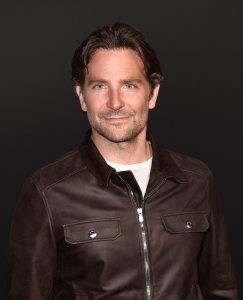May 10, 2021
The following is a press release from the Tribeca Film Festival:
The Tribeca Festival, presented by AT&T, today announced its lineup of Talks and Reunion Screenings with the stars and directors from iconic films, and conversations with the driving forces behind film, television, music, business and politics. These once-in-a-lifetime conversations will be part of the 20th Anniversary Festival celebration taking place city-wide June 9-20, the first major film festival to host in person events.
Tribeca Talks: Storytellers celebrates groundbreaking creators working across multiple mediums. This year’s multi-talented group includes: Mike Jackson and John Legend of Get Lifted Film Company; Oscar-nominated actor and director Bradley Cooper in conversation with Oscar-winning director Guillermo del Toro; comedian and actress Amy Schumer in conversation with Emily Ratajkowski; screenwriter Scott Z. Burns in conversation with Emmy Award-winning actor Matthew Rhys; Shira Haas, the breakout star of Unorthodox and Tribeca Festival Best Actress-winner for ASIA with actress and comedian Ali Wentworth; and Debbie Harry, Clem Burke and Chris Stein of the legendary punk band Blondie.
Tribeca Talks: Directors Series features intimate conversations with renowned directors who will share memorable moments from their prestigious careers. This year’s participating directors include Doug Liman, M. Night Shyamalan and Gina Prince-Bythewood.
Additional Tribeca Talks events include Scott Rechler, CEO and Chairman of RXR Realty, recording two new episodes of his podcast, Recalibrate Reality: The Future of NY, and conversations with Jason Hirschhorn, CEO of REDEF, about the business of entertainment and the future of podcasting.
The 2021 Tribeca Festival will also celebrate milestone anniversaries of some of Hollywood’s most iconic films. Director Joel Cohen will be joined in conversation with stars Frances McDormand and Steve Buscemi to commemorate the 25th anniversary of the Academy Award-winning Fargo; the 30th anniversary of the critically acclaimed The Five Heartbeats will reunite stars Robert Townsend, John Terrell, Tico Wells, Leon Robinson, Harry Lennix, Michael Wright and Hawthorne James; the 20th anniversary of the classic The Royal Tenenbaums, features stars Alec Baldwin, Gwyneth Paltrow, Luke Wilson, Owen Wilson, Anjelica Huston, Danny Glover, and director Wes Anderson; Robert De Niro teams up with director Martin Scorsese to discuss creating one of cinema’s eternal masterpieces, Raging Bull; and finally, Tribeca will celebrate the 100th anniversary of Charlie Chaplin’s first feature-length film, The Kid, with a special screening event.
“Each year the Tribeca Festival gathers the most esteemed names in film and entertainment for conversations that shine a light on the creative process,” said Jane Rosenthal, Co-Founder and CEO of Tribeca Enterprises and the Tribeca Festival. “This year we are particularly proud that we can once again convene these talented names for in-person conversations as we discuss new ways our world and business is being reshaped and reimagined.”
“This year’s Tribeca Talks will have timely conversations about real world issues and how they affect film, television, politics and business,” said Paula Weinstein, Chief Content Officer of Tribeca Enterprises. “Tribeca Talks and Reunion screenings are always a big fan favorite, and we look forward to the illuminating conversations that will take place during this milestone 20th Festival.”
Beginning today at 11AM EST, tickets to in-person screenings and events are available for advance reservation at https://www.tribecafilm.com/festival/tickets.
TRIBECA TALKS: DIRECTORS SERIES
This conversation series showcases the careers of influential filmmakers.
- M. Night Shyamalan
- Doug Liman in conversation with Jason Hirschhorn
- Gina Prince-Bythewood in conversation with Sanaa Lathan
TRIBECA TALKS: STORYTELLERS
Sponsored by Montefiore-Einstein
This series celebrates the illustrious careers of today’s most innovative creators, who have broken from traditional roles and pioneered their own forms of storytelling.
- Bradley Cooper and Guillermo del Toro
- Amy Schumer and Emily Ratajkowski
- Scott Z. Burns and Matthew Rhys
- Shira Haas and Ali Wentworth
- Get Lifted’s John Legend and Mike Jackson
- Blondie’s Debbie Harry, Clem Burke and Chris Stein
TRIBECA TALKS
- Scott Rechler – “Recalibrate Reality: The Future of NY”
- Jason Hirschhorn – “The Business of Entertainment” and “The Future of Podcasting”
REUNIONS & RESTORATIONS
The Royal Tenenbaums – 20th Anniversary
Royal Tenenbaum (Gene Hackman) and his wife, Etheline (Anjelica Huston), had three children — Chas, Margot, and Richie — and then they separated. Chas (Ben Stiller) started buying real estate in his early teens and seemed to have an almost preternatural understanding of international finance. Margot (Gwyneth Paltrow) was a playwright and received a Braverman Grant of $50,000 in the ninth grade. Richie (Luke Wilson) was a junior champion tennis player and won the U.S. Nationals three years in a row. Virtually all memory of the brilliance of the young Tenenbaums was subsequently erased by two decades of betrayal, failure, and disaster. The Royal Tenenbaums is a hilarious, touching, and brilliantly stylized study of melancholy and redemption.
- After the Screening: A live-streamed conversation with Wes Anderson, Alec Baldwin, Luke Wilson, Owen Wilson, Gwyneth Paltrow, Anjelica Huston, and Danny Glover.
Fargo – 25th Anniversary
Things go terribly awry when small-time Minnesota car salesman Jerry Lundegaard (William H. Macy) hires two thugs (Steve Buscemi and Peter Stormare) to kidnap his wife so he can collect ransom from his wealthy father-in-law. Once people start dying, the very chipper and very pregnant Police Chief Marge Gunderson (Frances McDormand) takes the case. Is she up for this challenge? You betcha.
- After the Screening: An-in person conversation Joel Coen, Frances McDormand, and Steve Buscemi
The Five Heartbeats – 30th Anniversary
Five friends leave their neighborhood and head for a new type of music – Motown. Coming in on the tail end of a rhythm and blues singing group explosion, The Five Heartbeats (Robert Townsend, Michael Wright, Leon Robinson, Harry J. Lennix, Tico Wells), rise and fall within the space of seven years. Along the way, the group deals with all manner of fame and fortune distractions — jealousy, greed, too much womanizing and drugs all take a toll.
- After the Screening: An in-person conversation with Robert Townsend, John Terrell, Tico Wells, Leon Robinson, James Hawthorne, Harry Lennix, Michael Wright moderated by Loren Hammonds.
The Kid – 100th Anniversary
Charlie Chaplin was already an international star when he decided to break out of the short-film format and make his first full-length feature. The Kid doesn’t merely show Chaplin at a turning point, when he proved that he was a serious film director—it remains an expressive masterwork of silent cinema. In it, he stars as his lovable Tramp character, this time raising an orphan (a remarkable young Jackie Coogan) he has rescued from the streets. Chaplin and Coogan make a miraculous pair in this nimble marriage of sentiment and slapstick, a film that is, as its opening title card states, “a picture with a smile—and perhaps, a tear.”
Raging Bull – Restoration
Robert De Niro teams up with director Martin Scorsese to create one of cinema’s eternal masterpieces. Nominated for eight Academy Awards®, including Best Picture and Best Director, this contemporary classic is “ambitious, violent, poetic and lyrical” (The New York Times). De Niro turns in a powerful, Best Actor Oscar®-winning performance as Jake La Motta, a boxer whose psychological and sexual complexities erupt into violence both in and out of the ring. Joe Pesci and Cathy Moriarty co-star.
- Director Martin Scorsese and Robert De Niro discuss the film’s lasting legacy in a pre-recorded conversation.
About the Tribeca Festival
The Tribeca Festival, presented by AT&T, brings artists and diverse audiences together to celebrate storytelling in all its forms, including film, TV, VR, games, music, and online work. With strong roots in independent film, Tribeca is a platform for creative expression and immersive entertainment. Tribeca champions emerging and established voices; discovers award-winning filmmakers and creators; curates innovative experiences; and introduces new technology and ideas through premieres, exhibitions, talks, and live performances.
The Festival was founded by Robert De Niro, Jane Rosenthal, and Craig Hatkoff in 2001 to spur the economic and cultural revitalization of lower Manhattan following the attacks on the World Trade Center. Tribeca will celebrate its 20th year June 9 – 20, 2021 www.tribecafilm.com/festival
In 2019, James Murdoch’s Lupa Systems, a private investment company with locations in New York and Mumbai, bought a majority stake in Tribeca Enterprises, bringing together Rosenthal, De Niro, and Murdoch to grow the enterprise.
About the 2021 Tribeca Festival Partners:
The 2021 Tribeca Festival is presented by AT&T and with the support of our corporate partners: Alfred P. Sloan Foundation, Audible, Bloomberg Philanthropies, CHANEL, City National Bank, CNN Films, Diageo, DoorDash, FreshDirect, Hudson Yards, Indeed, Montefiore-Einstein, NYC Mayor’s Office of Media and Entertainment, P&G, PwC, Roku, Spring Studios New York.






